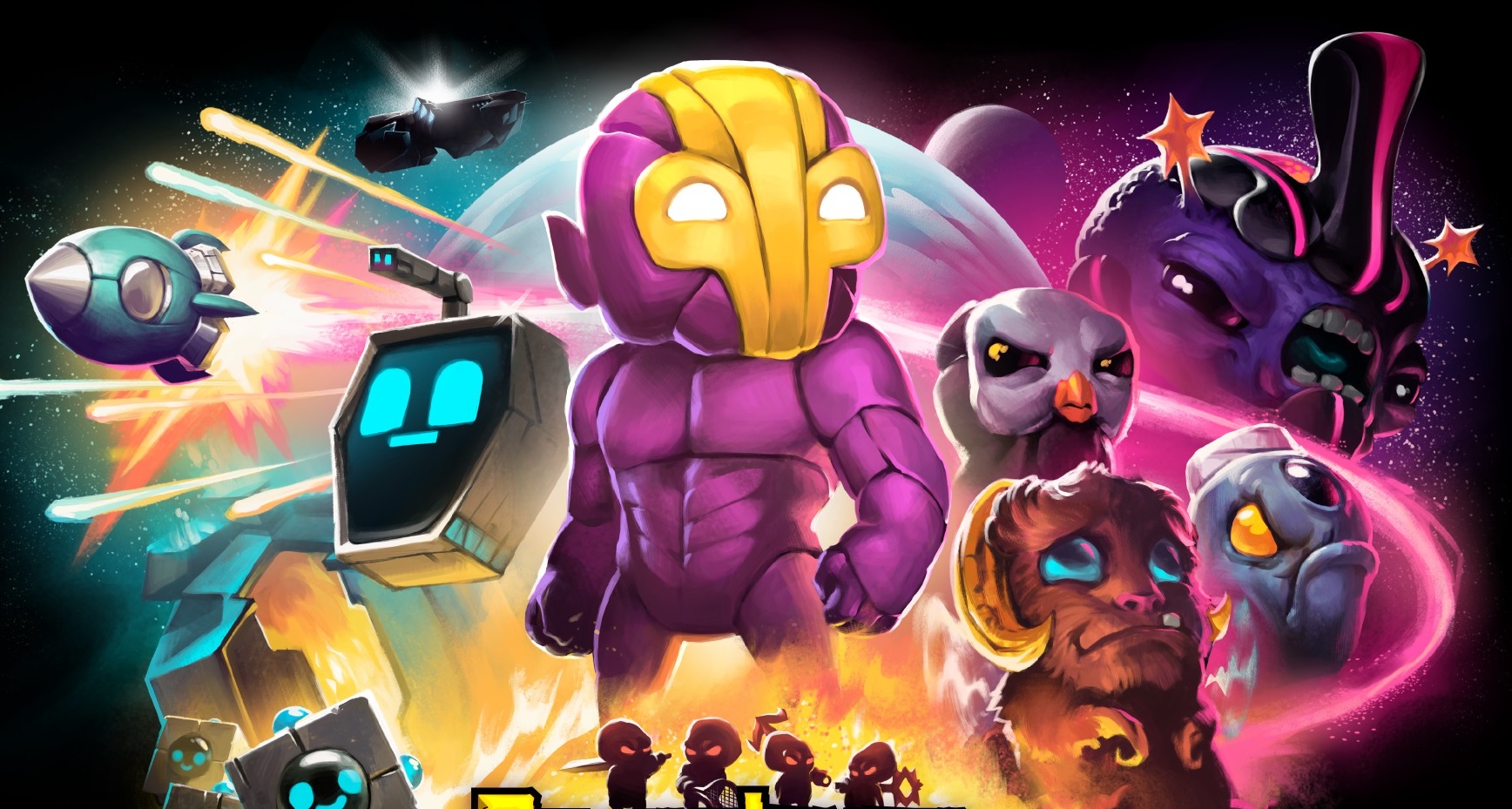Our Verdict
Fun combat, great writing, and a great look, but with pacing and progression tuned for a mobile experience, not the PC.
PC Gamer's got your back
What is it? An action-exploration game with crafting elements.
Publisher: Butterscotch Shenanigans
Developer: Butterscotch Shenanigans
Reviewed on: Core i5-4670, 8GB RAM, GeForce GTX 970
Expect to pay: £11/$15
Multiplayer: None
Link: Official site
Crashlands feels like a case study in the pros and cons of designing a game for both PC and mobile. It’s easy to assume that any decision made with mobile in mind will hurt the overall game on PC, but that’s really not true, and Crashlands proves it. Simple controls and a clean UI are good news for a game on any platform. Unfortunately, Crashlands also lends some ammo to the other side of the argument.
Crashlands is a top-down action RPG with lots of exploration and crafting. You play as Flux, an intergalactic delivery truck driver who has crash landed on an alien planet, and must find a way off so she can finish her deliveries. At first glance, it seems very similar to Klei's whimsical survive-'em-up Don’t Starve, but Crashlands isn’t trying to be a survival game. Instead of hunger and thirst bars, developer Butterscotch Shenanigans puts the focus on combat and quests. I spent most of my time doing missions for the grotesque but charming denizens of the world, helping them kill beasts, undermine demigods, or just go fishing.
Survival game tropes like crafting and resource collection are still here, but they’ve been simplified. Most noticeably, there’s no inventory management. You can pick up as much junk as you want and it sorts itself, becoming instantly available when you approach a crafting station. This is the first major design choice influenced by the mobile platform, and it’s a great one. Not having to worry about picking up too many sticks or flowers was a relief, as Crashlands asked me to grow my strength instead of scavenge to survive. Many hard-to-find materials could be needed later, and always being able to pick them up meant I was never punished with inventory busywork to enjoy the discovery. An infinite inventory also allows for even better changes to the formula, like automatically picking up drops from killed enemies, because why would you make me click the loot every time I make something explode?
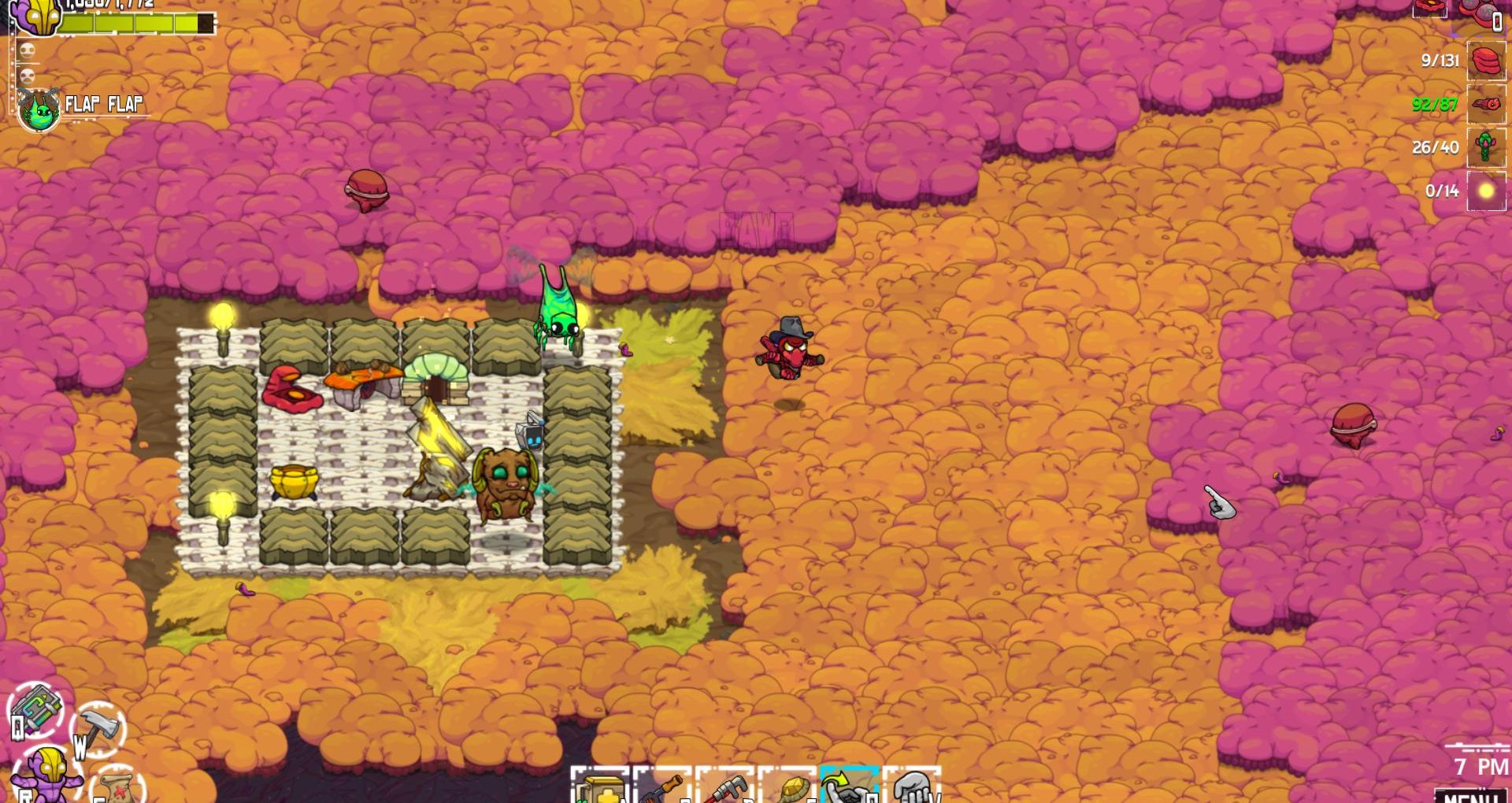
Kill, craft, repeat.
Without checking my pockets every two minutes I could focus more on the combat, which is one of the best parts of Crashlands. Clicking is used to both move and attack, with up to four items (healing potions, grenades, stunning items, and so on) assigned to the keyboard. While enemies charge up attacks, a red indicator appears on the ground and you can avoid damage by getting out of the way. So I’m dancing around telegraphed attacks, relying on my ability to micro my rapid clicking in order to deal damage while staying safe. It feels closer to MOBA combat than Minecraft, and my fights often spiraled wildly out of control as my dodging accidentally aggro’d more creatures, each type with its own movement and attack pattern. Crashlands’ boss fights are also some of its best moments, throwing combinations of attack patterns at you—it’s a real challenge to dodge fireballs, punching fists, and AoE attacks while still finding time to actually deal damage.
While the combat and the inventory management benefit from their mobile influence, the crafting system and the pacing of the game definitely do not. It wasn’t long before I figured out the grindy framework hidden underneath Crashlands’ charming exterior: Get a new crafting station. Make new armor, a new weapon, and a new tool. Use your new tool to collect a resource you couldn’t before. Use the new resource to make a new crafting station. Rinse and repeat.
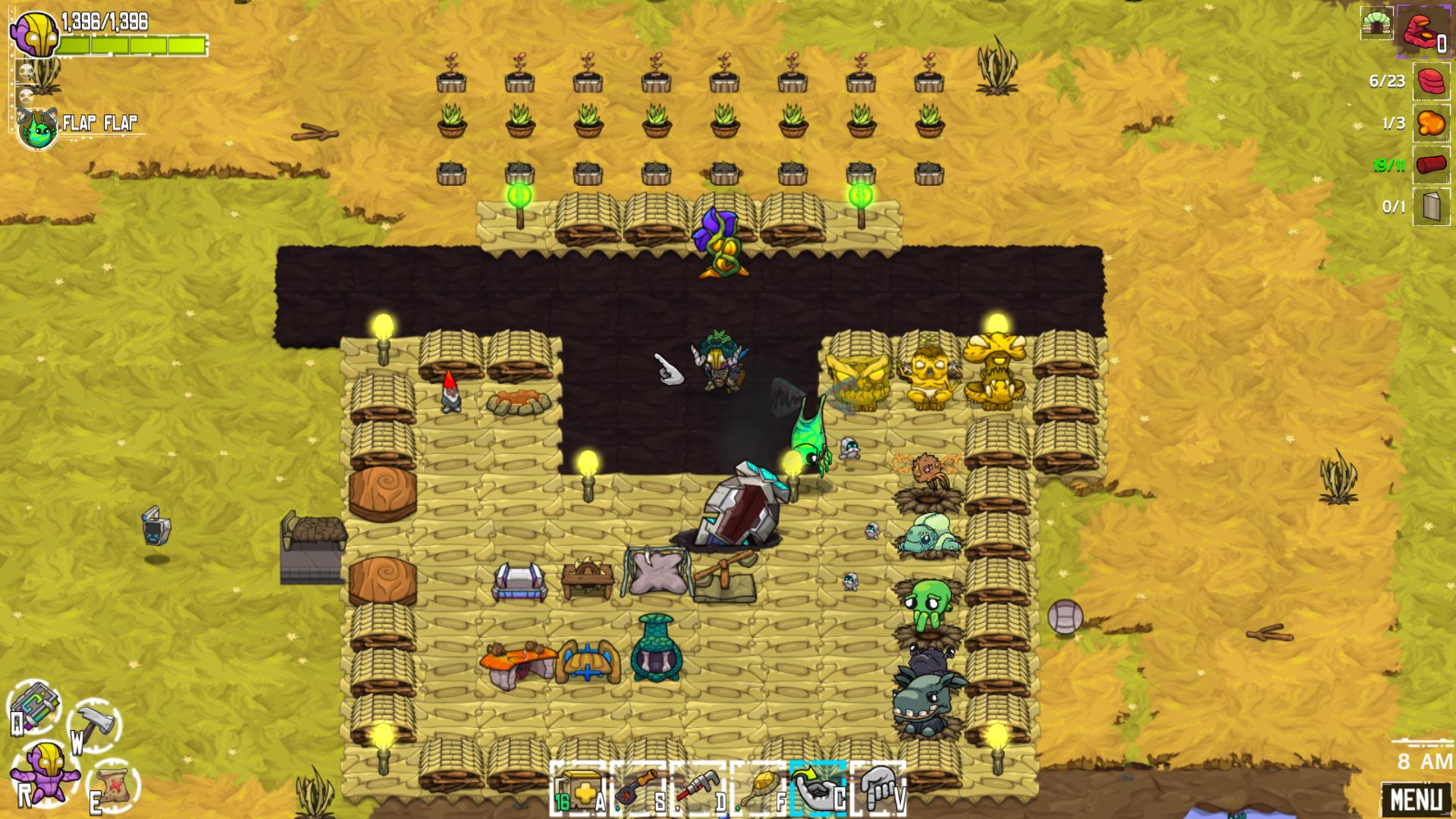
There's very little variation from this structure. Worse, it felt like Crashlands assumed I would be playing in short bursts rather than multiple hours at a time, because I seemed to reach a new tier of crafting bench roughly every hour or so. So if I sat down and played Crashlands for two hours, chances are the armor and weapons I began with would be obsolete twice over by the time I stopped. I could see that not being a problem if I were playing Crashlands for 20 minutes on the train to work each day, but my actions began to feel hollow when I knew the items I was working for would quickly become trash.
But the main reason this constant churn of item upgrades feels daunting is that there’s basically no player choice involved. The level eight weapon was pretty much always a better option than the level seven weapon. Every piece of equipment is imbued with random buffs like a chance to stun or resistance to certain types of attacks—my personal favorites were the damage-over-time effects—but the benefits were negligible compared to the guaranteed DPS and health increase with each new level, so those extra abilities did nothing to influence my decision to upgrade. There were no choices that might differentiate my playstyle from anyone else who would pick up the game—there’s only ever one choice: better or worse. It was still satisfying to feel myself getting stronger—going back to early areas and one-shotting Wompits felt like popping a fresh sheet of bubble-wrap—but I wish there’d been some branching paths in that growth.
It’s a good game on PC, but probably a better one on mobile.
This progression is occasionally shaken up by very rare legendary items, or when the next tool or crafting station is unlocked by completing story quests. Most these of these are fetch quests or “go kill this big version of a normal enemy” and I started getting flashbacks to my days playing World of Warcraft. The content of the quests is pretty standard for an RPG, but the thing that really kept me going was Crashlands’ sense of humor. There’s a lot of dialogue in the game and it’s really fun stuff. The story is over the top and melodramatic, but never takes itself seriously. In the second act of the game, Flux’s companion—a shipping robot named Juicebox—will randomly scream out “my babies!” as you try to recover the stolen packages you must deliver, one of a few running gags I laughed at throughout.
Crashlands is definitely a fun game—mostly thanks to its combat—but it feels torn between PC and mobile. Had the item progression and crafting been paced to allow for more player choice and more satisfying long play sessions, I would likely call Crashlands one of my favorite action/crafting games in a while. But with things the way the are, Crashlands started out very fun before becoming repetitive and predictable. It’s a good game on PC, but probably one better suited to your phone.

The art is mostly great, but the fact that walls don't tile well makes houses look disjointed. This is supposed to be a town.
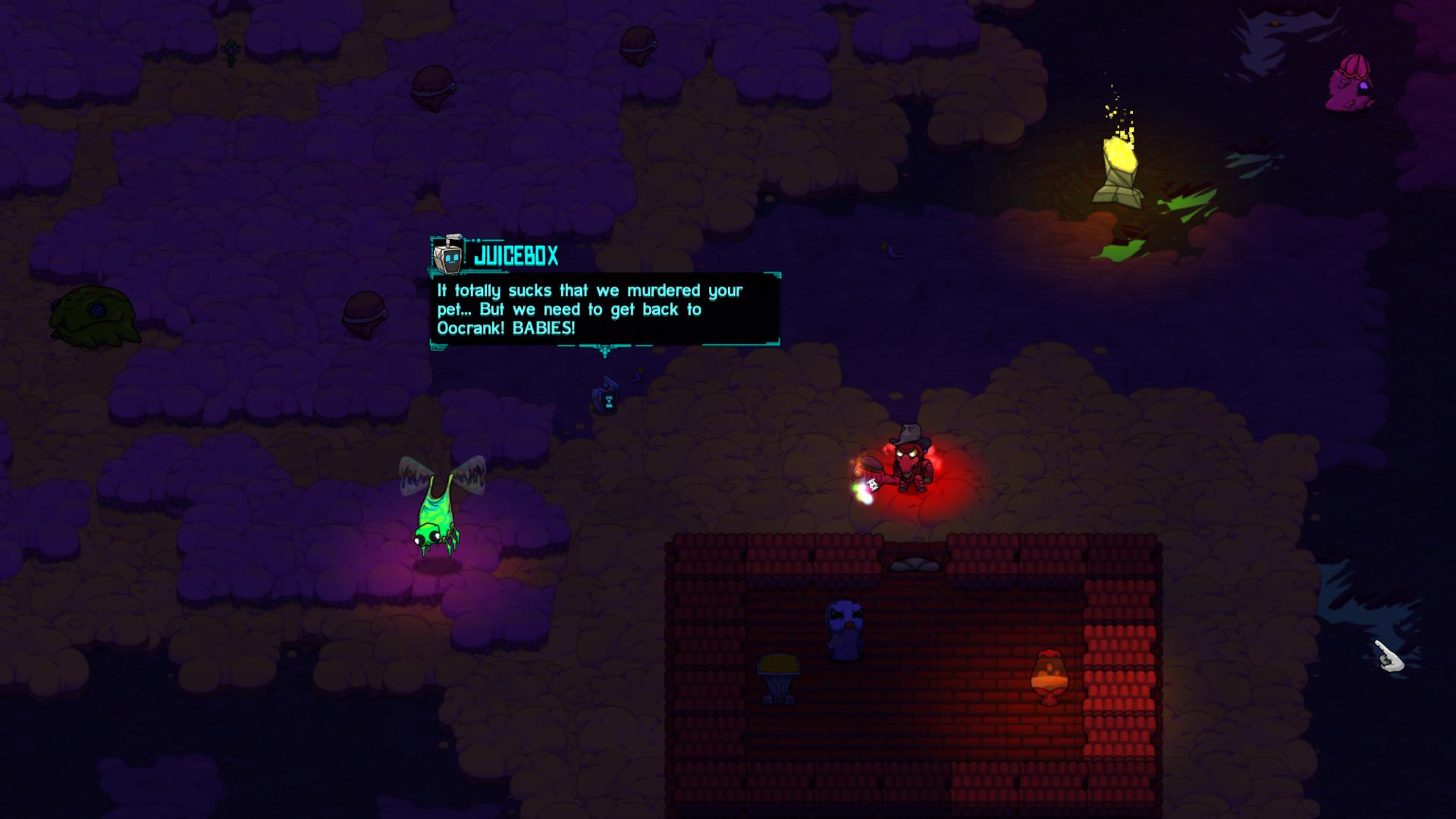
Juicebox worrying about the packages.
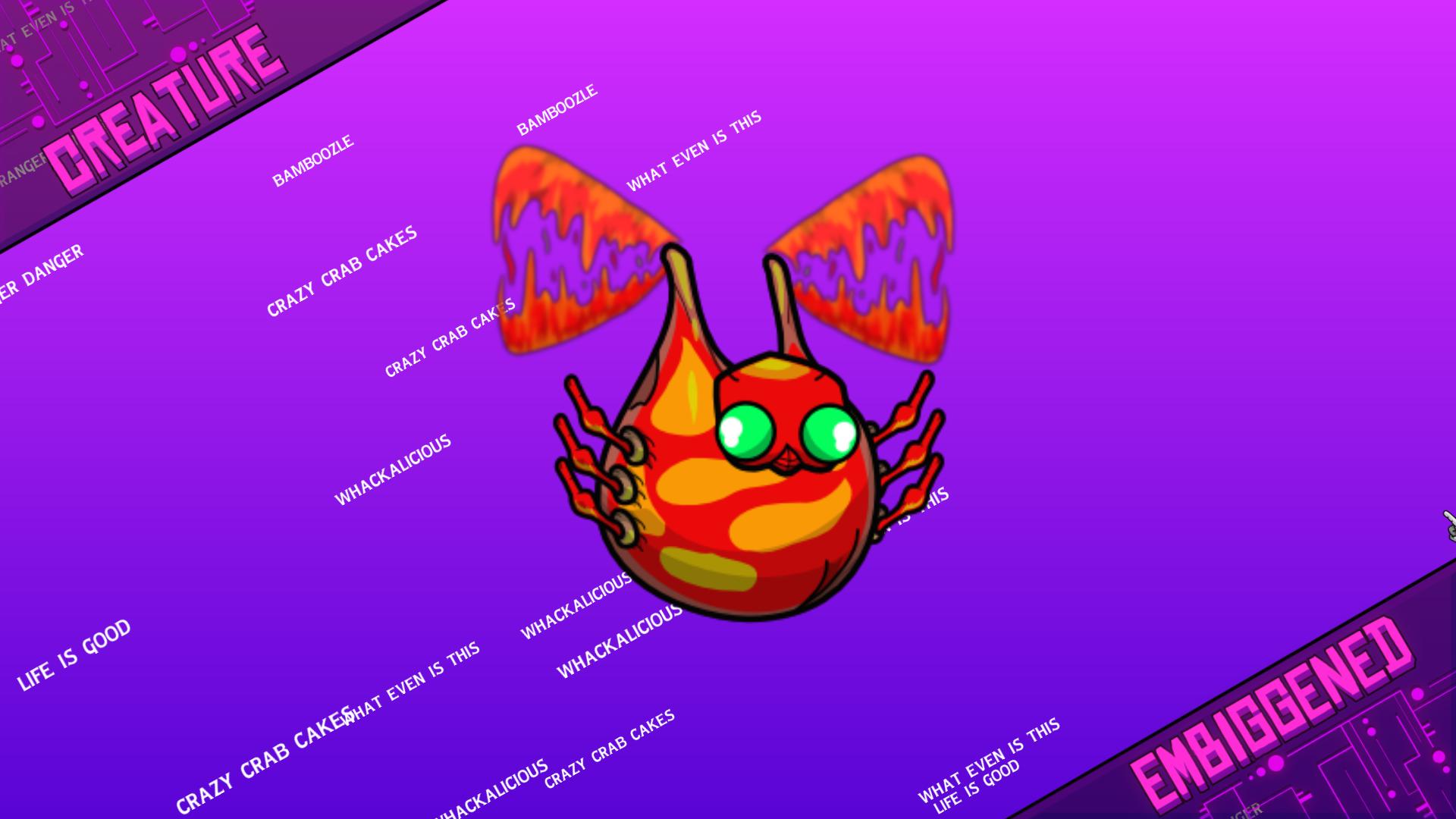
You can tame and grow the game's enemies as pets, and the 'embiggening' cutscene is one of the funniest things in the game.
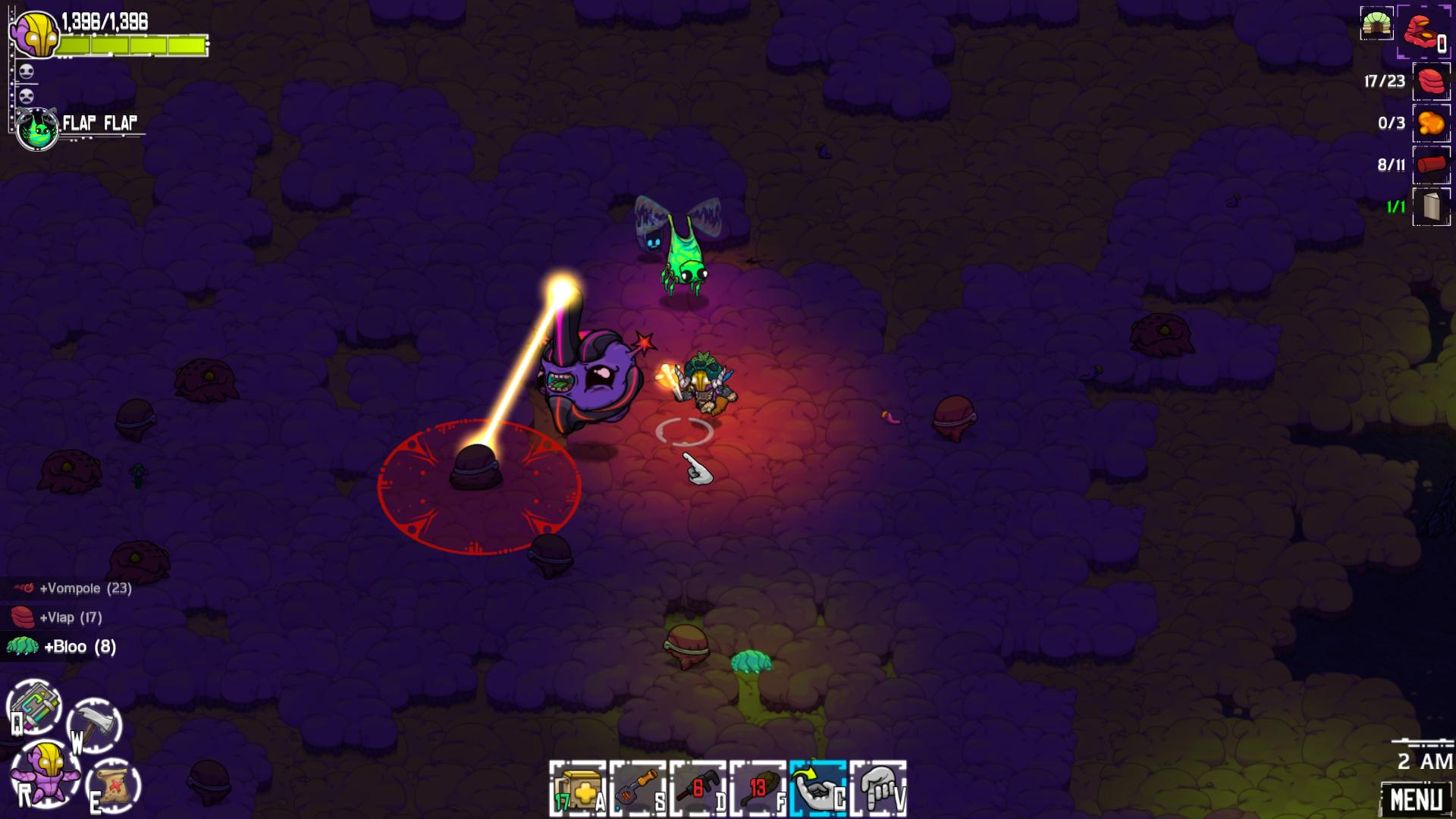
At one point, the main villain Hewgo Dooko (that big purple head) threatens to wait until you find something you love and the "laser" it. From then on, he would occasionally show up and do just that to resources I had just clicked.
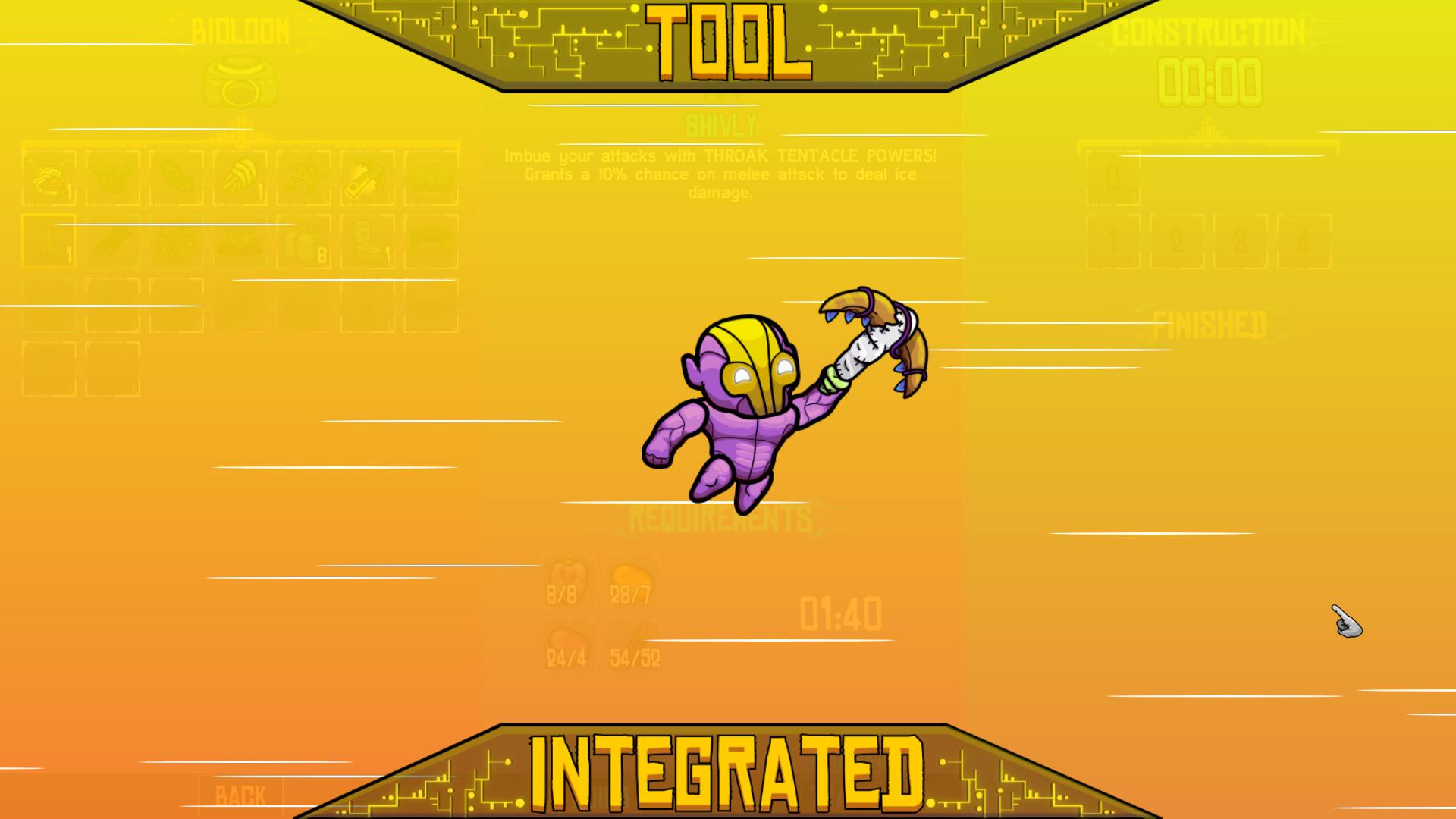
You never have to switch items or tools, the right one is automatically used when you need it.
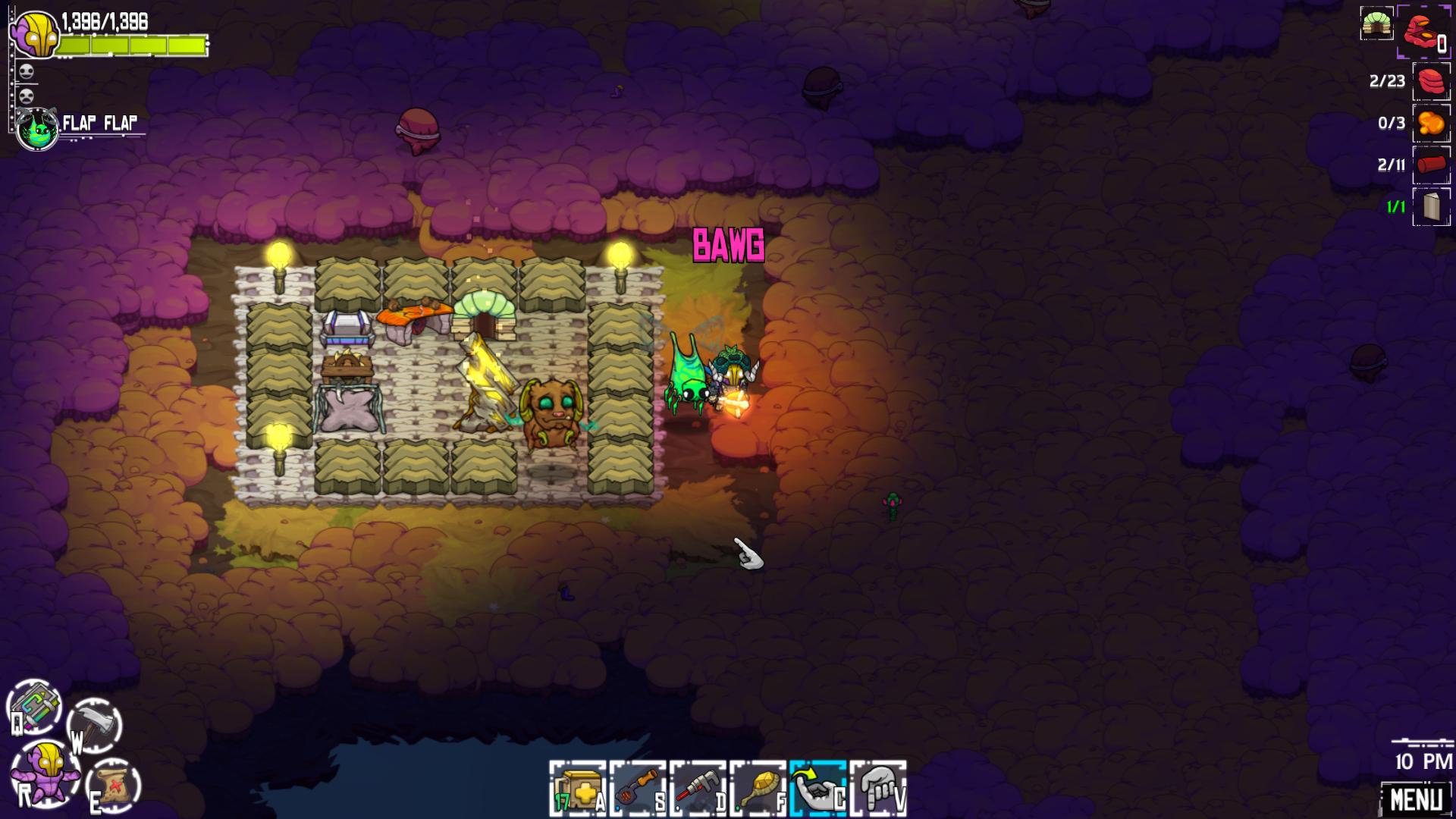
Not exactly a cozy home...
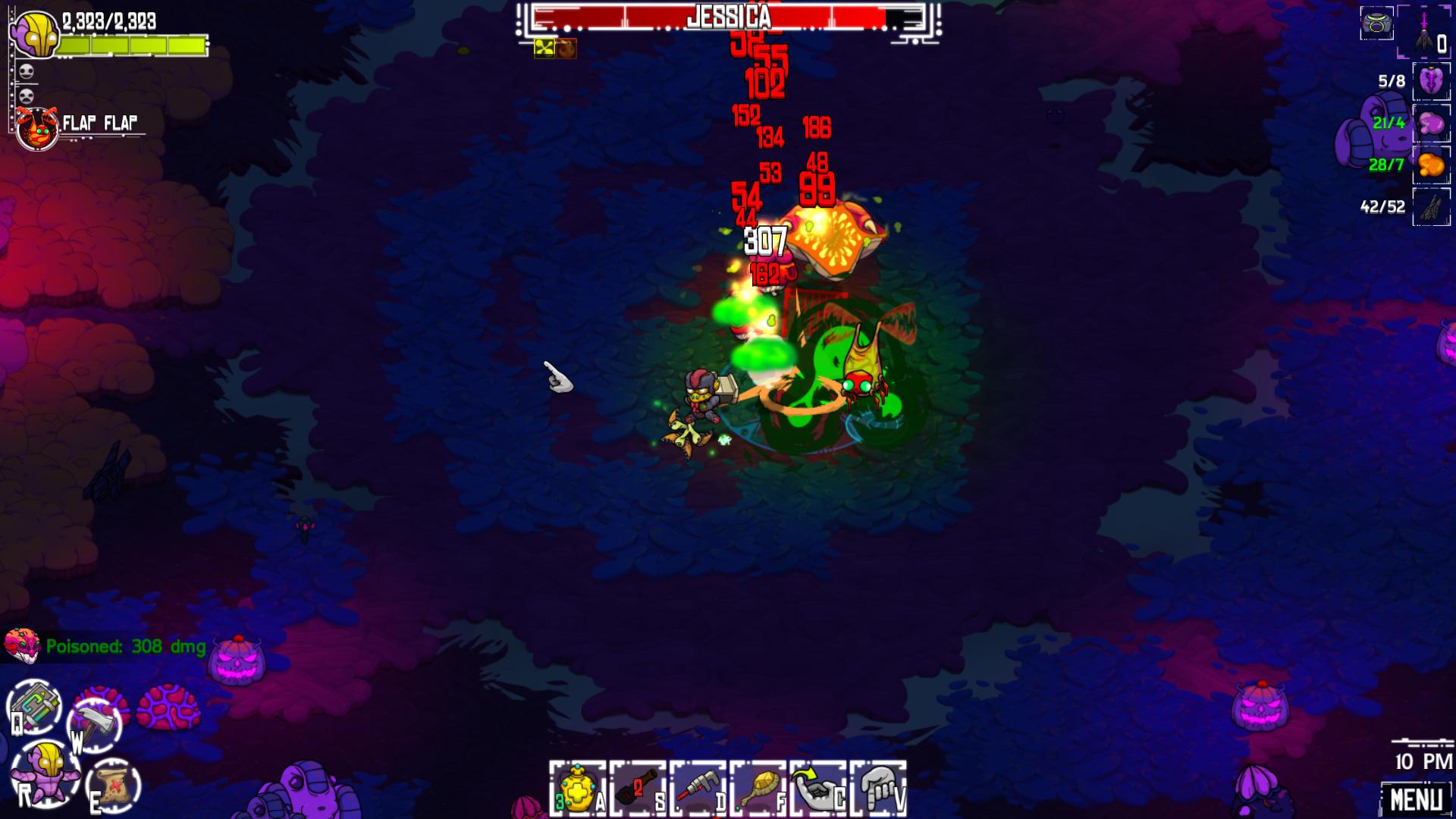
One of the game's boss fights, though you can barely see it under all the poison and fire I used.
Fun combat, great writing, and a great look, but with pacing and progression tuned for a mobile experience, not the PC.
